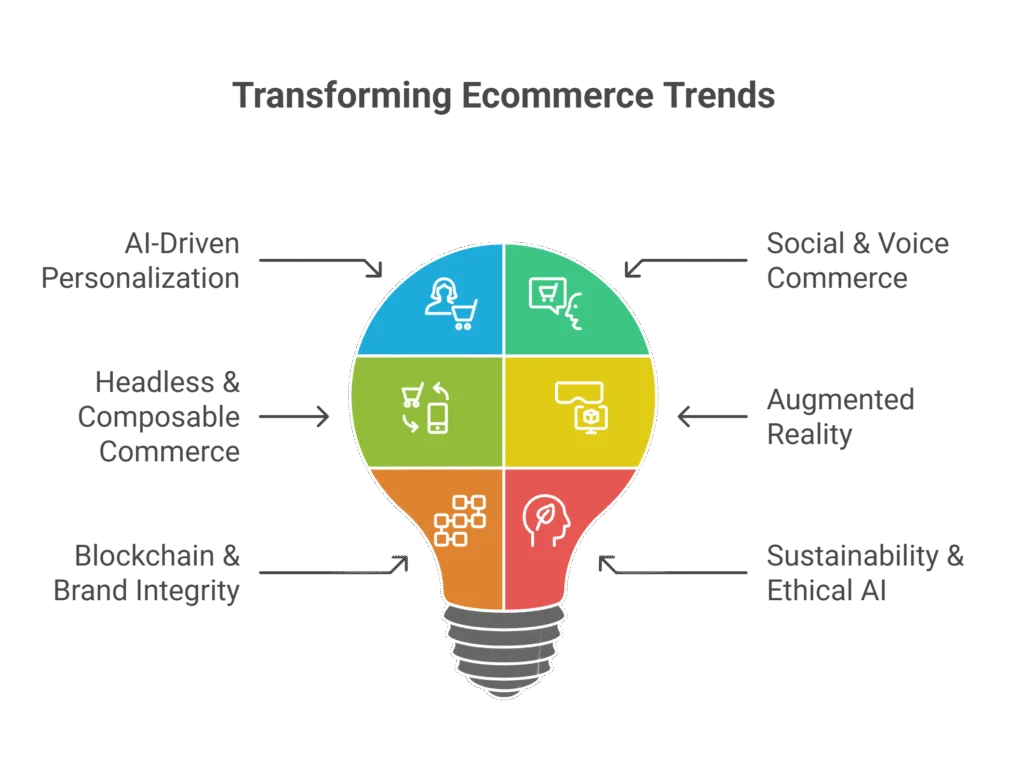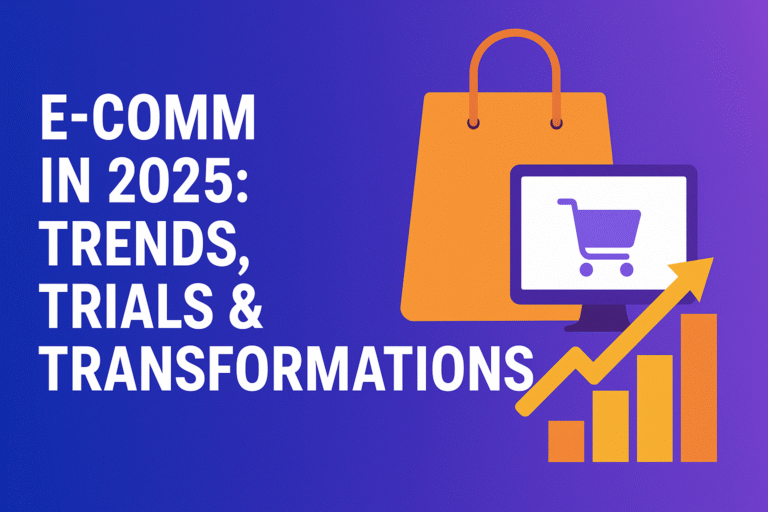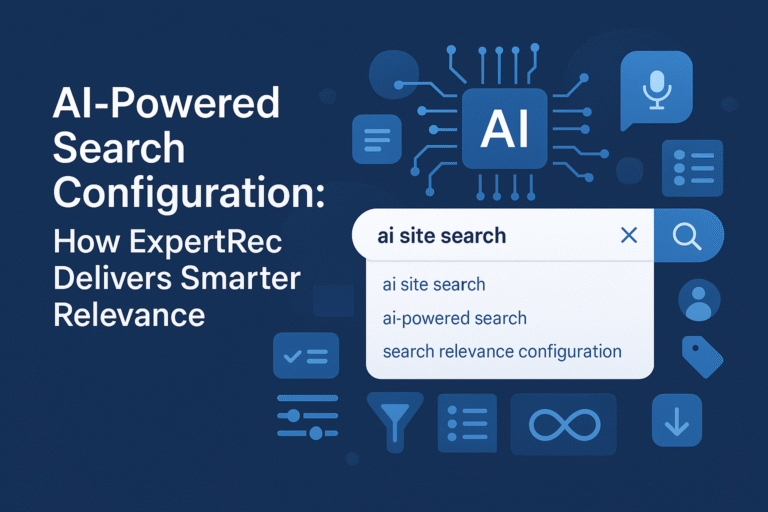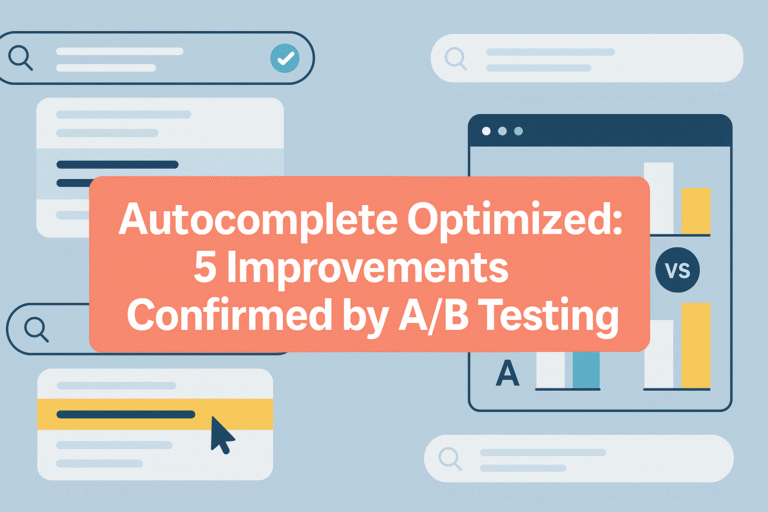The State of Ecommerce in 2025
Worldwide ecommerce continues expanding but at a tempered pace: global online retail is projected to reach $4.8 trillion this year, with growth decelerating to around 3.9% due to macroeconomic headwinds, especially in China and North America. India, for example, crossed $147 billion in 2024 and continues to surge, fueled by cheaper data and smartphone penetration.
Rising Challenges for Ecommerce Businesses
1. Shrinking Order Values & Cost Pressure
In markets like Australia, average order value has dropped ~23% over two years, though basket sizes increased as shoppers lean toward lower‑priced items. This dynamic forces retailers to pivot on pricing and value proposition.
2. Balancing Speed vs Sustainability
Consumers expect ultra‑fast delivery (2–3 days), pushing companies to bring logistics in-house. In India, giants like Amazon and Flipkart now manage 82% of their parcel volumes directly. But EU regulations mandating food/textile waste reduction and producer responsibility pose compliance challenges.
3. Ethical & Regulatory Scrutiny
With growing awareness of “dark patterns” (like manipulative UI tactics), nations are stepping up regulation, increasing compliance costs and pushing for transparent, user‑friendly design.
4. Security Risks & Fraud
A recent Magecart-style malware attack on OpenCart CMS underscored vulnerabilities across platforms; security monitoring, behavioral analysis, and fraud prevention are no longer optional.
Key Trends Transforming 2025 Ecommerce

1. AI-Driven Personalization & Conversational Commerce
AI, especially generative models, is revolutionizing search, recommendations, chatbots, and even voice shopping. Nearly 92% of brands now apply AI, and conversational, zero‑click search is gaining ground.
2. Social & Voice Commerce
Platforms like TikTok, Instagram, and Pinterest are becoming integrated sales channels. Voice-driven commerce is advancing too, estimates show conversational shopping could reach $34 billion by 2034.
3. Headless & Composable Commerce
Decoupling front-end and backend (headless) grants flexibility and speed, vital for omnichannel experiences across mobile, web, kiosks, and IoT.
4. Augmented Reality & Immersive Experiences
AR is gaining traction, allowing consumers to “try” products virtually, boosting confidence and reducing returns.
5. Blockchain & Brand Integrity
Blockchain for supply-chain transparency and guarding against counterfeits is becoming mainstream.
6. Sustainability & Ethical AI
Eco-conscious practices, from packaging to operations, are now baseline expectations. Meanwhile ethical AI is critical to prevent data privacy issues and algorithmic bias.
Ecommerce in Global & Regional Lens
Emerging Markets Powering Growth
India’s ecommerce market is growing ~19% annually, with digital buyers poised to hit 400 M, supported by UPI and D2C brand momentum . Southeast Asia relies on COD and mobile wallets, thriving on influencer-led live commerce.
Marketplaces & Retail Media as Growth Engines
Marketplaces remain pivotal, think Amazon, Temu, Zulily, while retail media is becoming a major revenue stream, with targeted ads enabling new monetization models .
Tackling the Top Ecommerce Pain Points
| Challenge | Strategy |
|---|---|
| Limited budgets & UX issues | Focus on reviews, margin optimisation, smooth UX, reliable sourcing |
| Retention & conversions | Use AI, personalization, social commerce, AR, voice, and headless |
| Fraud & dark patterns | Invest in security, ethical audits, transparent interfaces |
Is There a Single Platform That Handles This?
Naturally, all these trends and challenges raise the question: is there a platform that offers plug-and-play solutions for AI personalization, headless commerce, security, and compliance?
Expertrec is one solid option to consider. It offers:
- Built-in compliance and secure infrastructure
- Ultra-fast site search with <50ms query response
- AI-driven personalization tailored to user behavior
- Easy no-code/low-code integration with major platforms
- Real-time analytics & merchandising controls
Final Takeaway
Ecommerce in 2025 is a balancing act: smart, AI-powered experiences meet ethical and regulatory depth, fast delivery loops in sustainability, and flexible tech unites omnichannel growth. Brands that prioritize security, trust, and efficiency, while embracing innovation, will thrive in this dynamic marketplace.
FAQs
1. Why is AI so central to ecommerce in 2025?
AI enables hyper-personalization, conversational commerce, better fraud detection, and dynamic operations, and 92% of brands already invest in it.
2. What makes headless commerce essential?
It decouples front- and back-end, enabling rapid iteration and omnichannel experiences across devices.
3. How does ethical regulation affect online stores?
With rising laws against dark patterns and data misuse, companies must build transparent, safe commerce experiences or face fines and reputational damage.
4. Are AR and voice commerce worth the investment?
Yes, AR boosts purchasing confidence and conversions, while voice commerce is emerging as a hands-free growth channel.
5. What should ecommerce leaders prioritize now?
Focus on security, AI-driven CX, flexible architecture, sustainable logistics, and regulatory compliance, then iterate quickly through user-centric testing.




